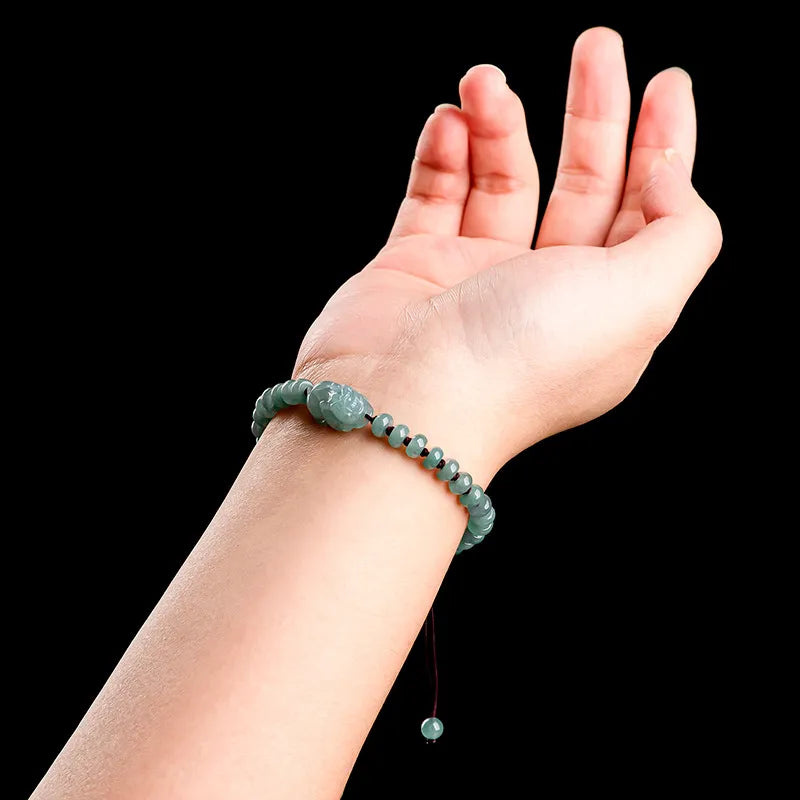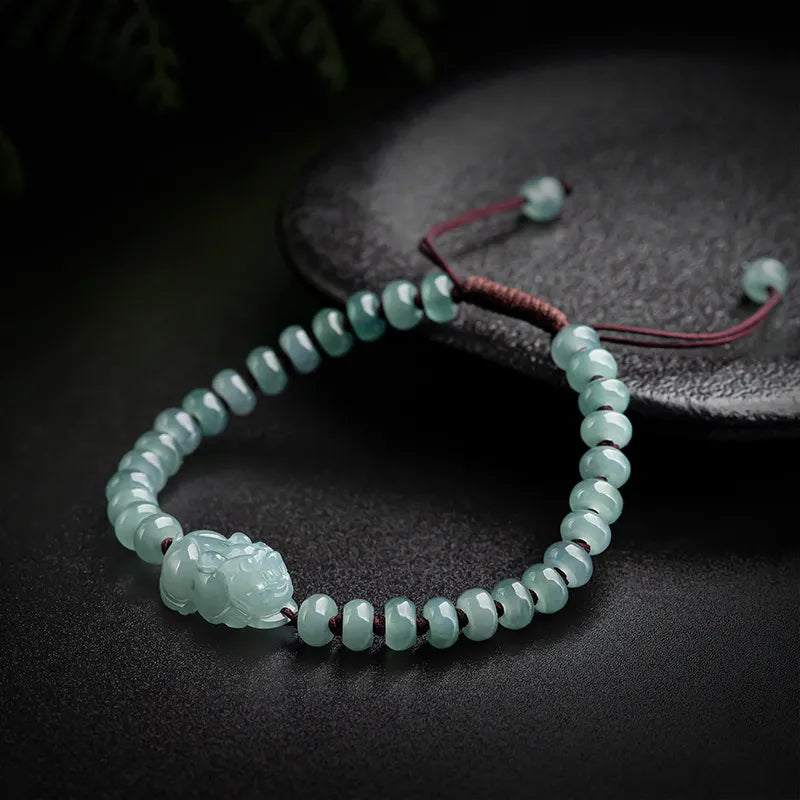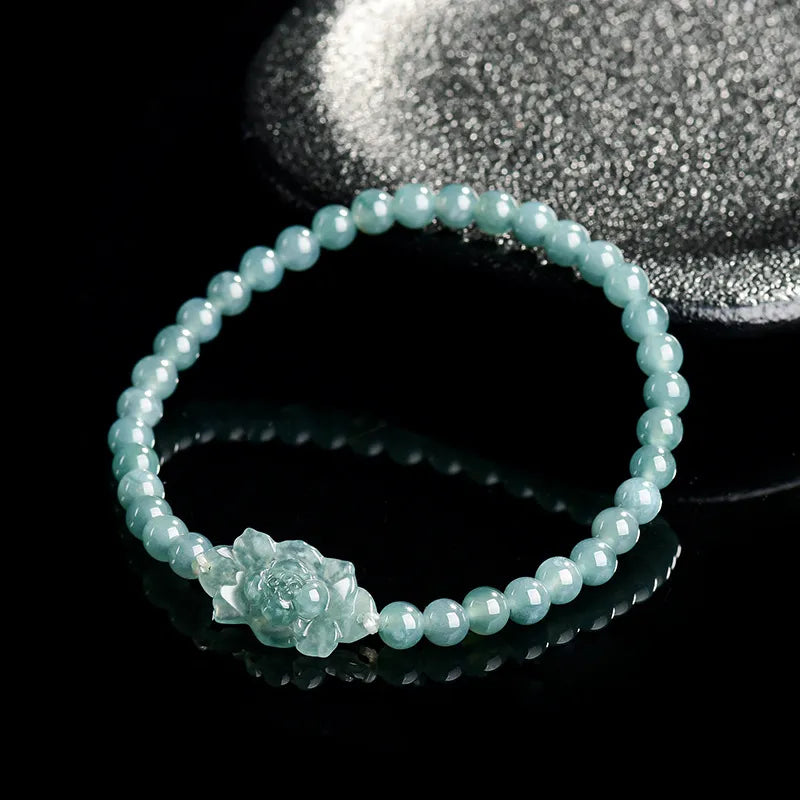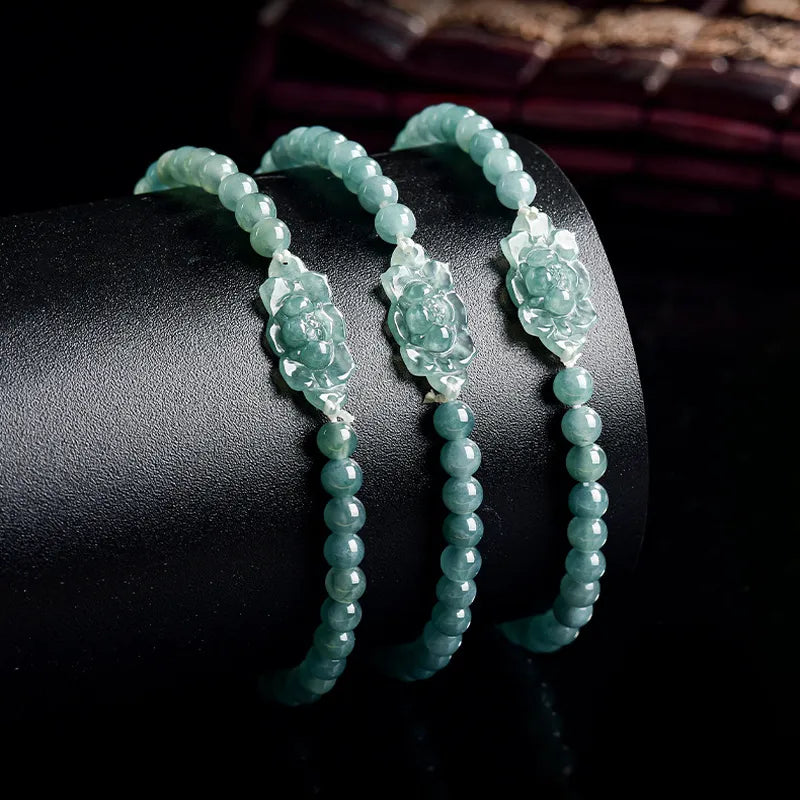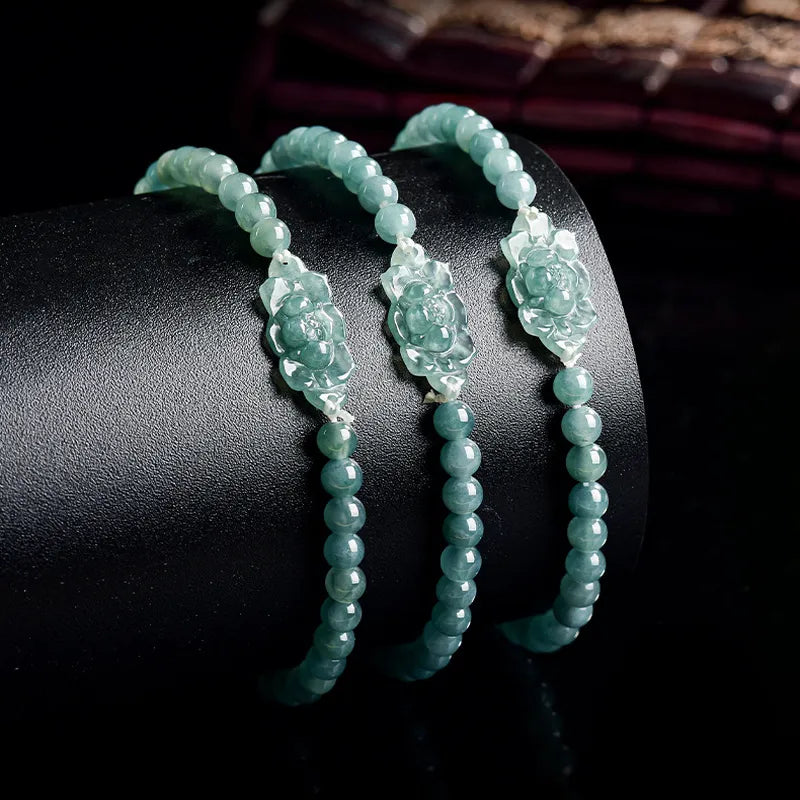Choosing Jade Bangle Sizes for Different Age Groups: A Practical Guide
Selecting the right jade bangle size involves more than aesthetics—it requires considering comfort, mobility, and lifestyle changes across age groups. Wrist dimensions, bone density, and daily habits evolve over time, influencing how a bangle fits and functions. Below, we explore how to tailor size choices to meet the unique needs of children, adults, and seniors.

1. Children and Adolescents: Flexibility and Growth Considerations
Younger wearers face rapid physical changes, making adjustable or slightly larger sizes practical for long-term use.
- Wrist Growth: Children’s wrists grow quickly, so opt for bangles with a small margin of extra space. A snug fit that allows room for growth (about 1–2cm larger than the current wrist measurement) prevents the need for frequent replacements.
- Material Flexibility: Lightweight, durable materials like nephrite jade are ideal for active children. Avoid overly rigid or heavy bangles that may restrict movement during play or sports.
- Safety First: Ensure the bangle’s inner diameter is large enough to slide off easily in emergencies. Tight-fitting jewelry can pose risks during accidents or if caught on objects.
Daily Use Tip: Encourage children to remove bangles during high-energy activities to prevent breakage or injury.
2. Adults (20s–50s): Balancing Style and Practicality
Adults often prioritize versatility, combining daily wear with professional or social settings.
- Standard Sizing: Most adults fall into a common wrist size range (14–16cm circumference). A bangle with an inner diameter of 5.8–6.5cm typically fits comfortably, allowing slight movement without slipping.
- Lifestyle Adaptability: For those with active jobs (e.g., healthcare, fitness), choose a bangle with a snug but not restrictive fit. Office workers may prefer slightly looser sizes for all-day comfort.
- Layering Compatibility: If stacking bangles with other jewelry, ensure each piece has enough space to prevent clashing or discomfort. A uniform width (6–8mm) works well for layered looks.
Fashion Insight: Adults often experiment with bolder designs or colors. Ensure the bangle’s size complements these choices—a thick bangle may overwhelm delicate styles, while a thin one could look lost beside chunky accessories.
3. Seniors (60+): Comfort and Ease of Wear
Aging brings changes in skin elasticity, joint mobility, and dexterity, requiring softer, more accommodating sizes.
- Looser Fits: As skin loses elasticity, a slightly looser bangle (inner diameter 6.5–7cm) reduces pressure on the wrist. This prevents irritation or restricted blood flow.
- Lightweight Designs: Heavy bangles can strain fragile joints. Opt for thinner profiles (4–6mm) or hollowed-out designs that maintain elegance without weight.
- Simple Removal: Choose bangles with a wider opening or flexible material to ease putting on and taking off. Arthritis or reduced grip strength may make tight bangles difficult to manage.
Health Consideration: Seniors with circulatory issues should avoid tight-fitting jewelry. A bangle that slides freely ensures comfort during prolonged wear.
4. Universal Tips for All Age Groups
Regardless of age, certain principles apply to ensure a safe and comfortable fit.
- Accurate Measurement: Use a flexible tape or string to measure wrist circumference at its widest point. Add 1–2cm for comfort, adjusting based on age and lifestyle.
- Testing the Fit: Slide the bangle over your hand (not just the wrist) to ensure it fits without force. The knuckles are often the tightest part of the hand.
- Seasonal Adjustments: Wrists may swell in hot weather or shrink in cold. A bangle that fits perfectly in summer might feel tight in winter, so consider a mid-range size.
Pro Tip: If buying as a gift, observe the recipient’s existing jewelry for clues about their preferred fit. Err on the side of slightly larger for growing children or seniors.
5. Addressing Common Misconceptions
- “Tighter is safer”: A bangle that’s too tight can cause numbness, swelling, or even nerve damage. Prioritize comfort over a “secure” feel.
- “One size fits all”: Wrist shapes vary—some are round, others oval. A bangle that fits a friend’s wrist may not suit yours.
- “Adjustable bangles are unnecessary”: For children or those with fluctuating sizes, adjustable designs (e.g., hinged or elastic bands) offer flexibility without compromising style.
Cultural Context: In some traditions, bangles are worn tightly as a symbol of protection. Modern interpretations prioritize health, blending tradition with practicality.
Final Thoughts on Age-Appropriate Sizing
Choosing a jade bangle size by age group ensures harmony between the wearer’s physical needs and lifestyle. Children benefit from room to grow, adults balance style and function, and seniors prioritize comfort and ease. By aligning size choices with these factors, a jade bangle becomes a cherished, safe accessory at every stage of life.
